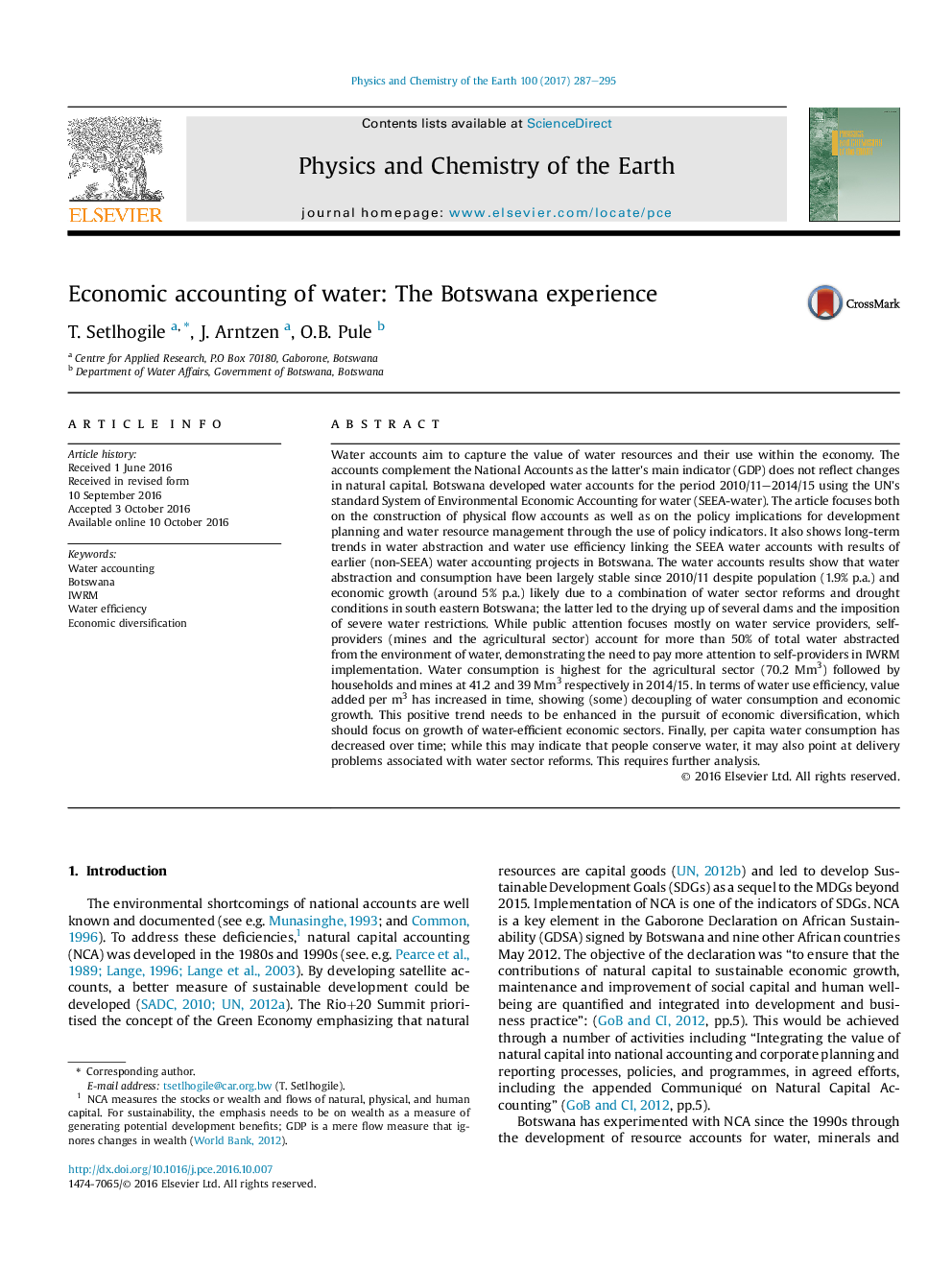| Article ID | Journal | Published Year | Pages | File Type |
|---|---|---|---|---|
| 5784570 | Physics and Chemistry of the Earth, Parts A/B/C | 2017 | 9 Pages |
â¢NCA is a key tool in the pursuit of sustainable development and IWRM.â¢There is need to increase water use efficiency of sectors.â¢There is need to make better use of non-conventional water resources.â¢The accounts need to inform IWRM implementation and development planning processes.â¢Stakeholder participation in the process is critical.
Water accounts aim to capture the value of water resources and their use within the economy. The accounts complement the National Accounts as the latter's main indicator (GDP) does not reflect changes in natural capital. Botswana developed water accounts for the period 2010/11-2014/15 using the UN's standard System of Environmental Economic Accounting for water (SEEA-water). The article focuses both on the construction of physical flow accounts as well as on the policy implications for development planning and water resource management through the use of policy indicators. It also shows long-term trends in water abstraction and water use efficiency linking the SEEA water accounts with results of earlier (non-SEEA) water accounting projects in Botswana. The water accounts results show that water abstraction and consumption have been largely stable since 2010/11 despite population (1.9% p.a.) and economic growth (around 5% p.a.) likely due to a combination of water sector reforms and drought conditions in south eastern Botswana; the latter led to the drying up of several dams and the imposition of severe water restrictions. While public attention focuses mostly on water service providers, self-providers (mines and the agricultural sector) account for more than 50% of total water abstracted from the environment of water, demonstrating the need to pay more attention to self-providers in IWRM implementation. Water consumption is highest for the agricultural sector (70.2Â Mm3) followed by households and mines at 41.2 and 39Â Mm3 respectively in 2014/15. In terms of water use efficiency, value added per m3 has increased in time, showing (some) decoupling of water consumption and economic growth. This positive trend needs to be enhanced in the pursuit of economic diversification, which should focus on growth of water-efficient economic sectors. Finally, per capita water consumption has decreased over time; while this may indicate that people conserve water, it may also point at delivery problems associated with water sector reforms. This requires further analysis.
